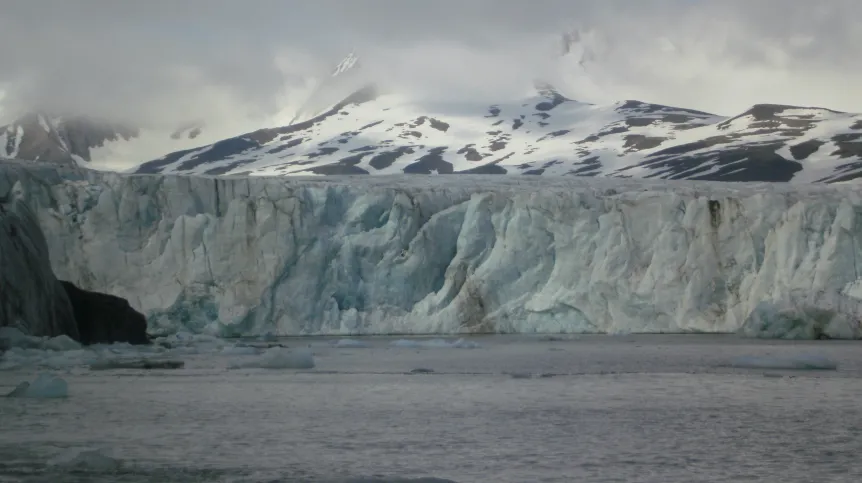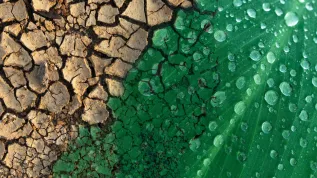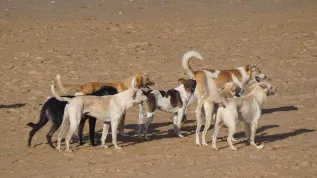
Thermal imaging camera, used, for example, to control building insulation, has found a use on Spitsbergen as a tool for non-invasive studies of streams, glaciers, and animals, told PAP Katarzyna Grudzińska from Wrocław University of Technology.
"An infrared camera sees processes invisible to the naked eye. Its use in the study of the polar environment has proved to be a hit" - said PhD student from the Department of Geology and Mineral Waters at Wrocław University of Technology, Katarzyna Grudzińska. Together with Damian Kasza from the Department of Geodesy and Geoinformatics, on Spitsbergen she checked the capabilities of equipment that most people would associate with the detection of defects in installations or building insulation.
The device in question is a camera that sees the world in the infrared, allowing the observer to perceive the differences in temperature between the different parts of the environment. Warmer objects shows in yellow and red, and cool places in shades of green and blue.
Thermal vision is an excellent tool for non-invasive study of the environment - geological, hydrogeological studies, studies of glaciers and even animals, scientists said after returning from an expedition to the southern part of Norway\'s largest island. "Very often, we know that something is happening in nature - for example, with ice and water, but we can not see it.
The camera shows things invisible to the eye. It allows to identify sites that could be of interest, simplifies and shortens the search time. The more so, that not every place in the Arctic is easy to reach. This camera allows the examination of the coast from a pontoon. It shows warmer places that can be seen very clearly in the infrared image" - said Katarzyna Grudzińska.
Information acquired through thermal imaging will allow to improve the specialist maps and help explore the processes occurring in the environment. "After we identify an interesting process, other scientists can enter and analyse it" - said Grudzińska.
Using the camera, the researchers from Wrocław University of Technology located the areas of outflow from the glacier, where cold water from the glacier mixed with warmer sea water. They slso studied thermal springs present here and there on Spitsbergen. "They are not very hot, but you have to remember that in the snow and ice of the Arctic, an object that has a temperature of 11-12 ° C, is warm" - explained Grudzińska.
She added that the thermal imager allows to verify whether the outflows are extensive zones, or rather points, how they look and exactly at which point they are, and how big the flow is.
There are indications that thermal vision can also facilitate the work of ornithologists. For example scientists who study Little Auk - bird from the north, which lives in large colonies and nests on steep cliffs, under the overhanging rock and stones. "These birds are quite hard to find. Meanwhile, camera sees the thermal trail and allows to find the nest with birds or eggs. This is an incredible advantage. It reduces the search time and allows to non-invasively study the environment" - emphasised the geologist.
PAP - Science and Scholarship in Poland
zan/ krf/ mrt/
tr. RL













